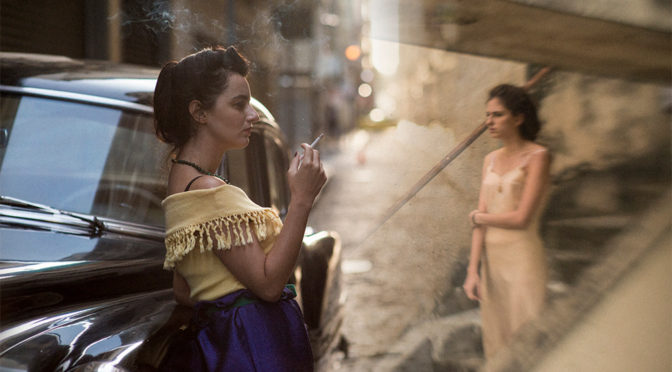Do you ever say goodbye to a family member without worry, knowing you’ll see them again? Karim Aïnouz’s “The Invisible Life of Eurídice Gusmao” is about two sisters who want to be together, but outsider and insider forces attempt to keep them apart. The story is at times horribly tragic, showing the obtuse treatment of women in the 1950’s Brazil.
One night, Guida (Julia Stockler) runs away with a sailor from Greece. The talented Eurídice (Carol Duarte) plans to join a national pianists’ conservatory in Vienna. They mean to take time apart to grow and learn. Their easy, childlike lives end at the point of their separation and they grow up fast and hard, becoming jaded and cynical while never losing their humanity – the two sisters carry themselves forward with incredible grace and strength.
The film is shot on 16mm and benefits greatly from the format. The time tested technique adds filmic ‘noise’ (the grainy spots on screen) to grant the images a vintage look. This, along with brilliant costume design and natural vistas, allows the film to fully realise itself as a period melodrama. Rio has genuinely never looked so good. All in all, the world-building is masterful and accurate with next to no artifice.
The period setting of Rio in the 50s is as much a character as the two leads. In one particular shot, further into the future, a character looks out onto the city through three windows. The middle window is tinted yellow while the others are clear. This is a visual innuendo on the ‘lens of nostalgia’: we enter the director’s eyes throughout the film and see a similar yet changed world. Once more uncivilised, yet easily more beautiful.

